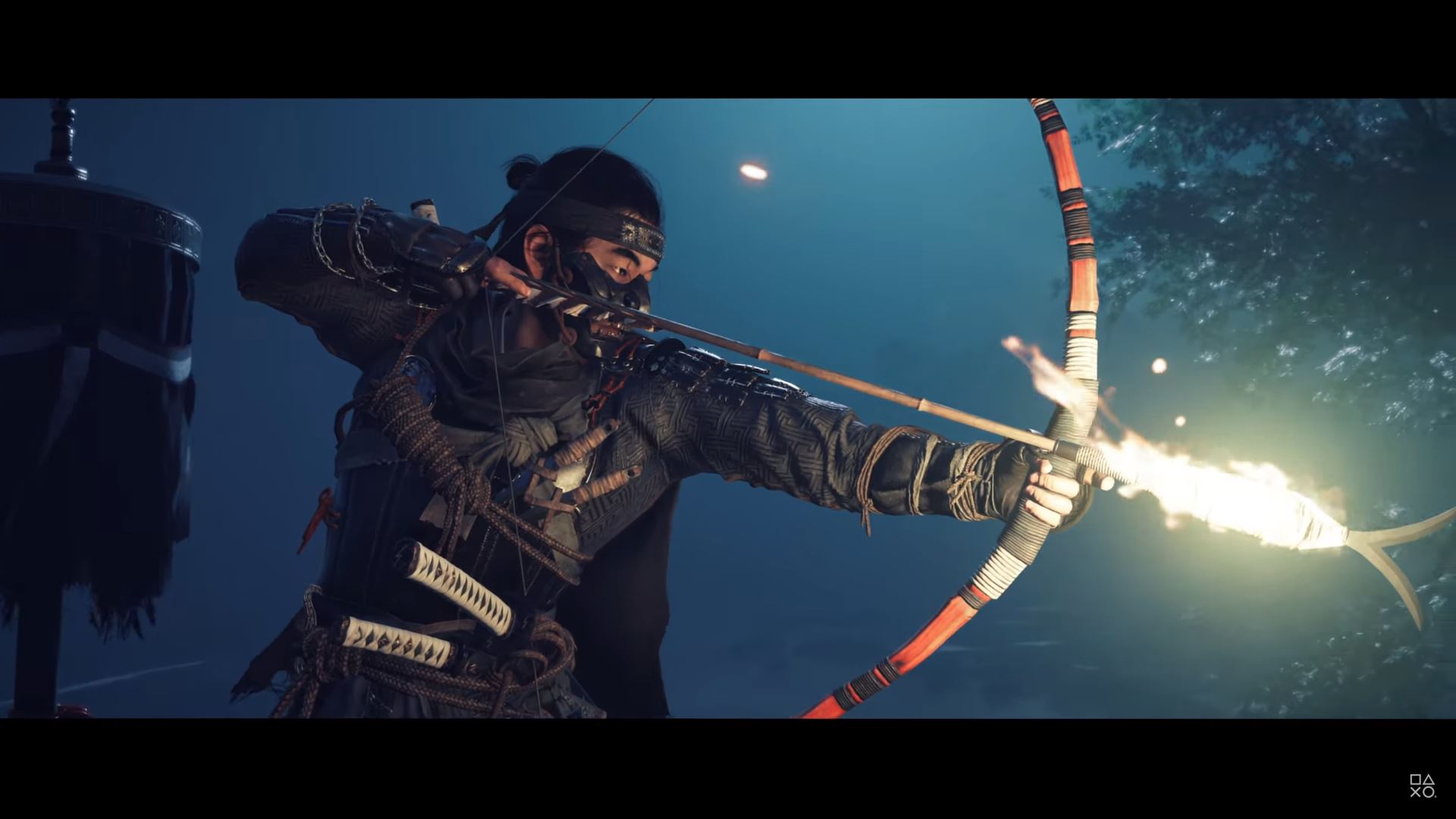

The Shakuhachi, as you may know from the original game, is one of the most iconic sounds in Japanese traditional music. In these pieces, you can hear the folk-inspired Japanese instruments played by Kinya Sogawa, Yutaka Oyama, and Akemi Yamada on the Shakuhachi, Tsugaru-Shamisen, and Koto, respectively. Lightning in the Storm and Eternal Blue Sky, two pieces that play systematically throughout Iki Island, illustrate this rustic approach. Essentially, we just wanted to do something more – for lack of a better word – “wild” than the original version of Ghost of Tsushima. Thus, we leaned into more folk-inspired writing that focuses on traditional Japanese music idioms. The disorder was inspiring for Chad and me, and we wanted the music to reflect this rustic land. The fictional version of feudal Iki Island in Ghost of Tsushima is a wild, lawless land of raiders and criminals, and the people on this island are a unique menagerie of fishermen, pirates, and travelers that govern themselves. Check out her video! She went and played the Jin Sakai theme on the Hakata beaches, where some of the Mongol fights took place!” She introduced Bill and me to her instruments over Zoom and then worked with us over a couple of months, sending us samples of her playing different ideas, trying things out, etc. Ogata Sensei was really happy to be involved in the Tsushima score, having grown up around the Mongol invasion sites. “Bill and I were super excited to involve a Chikuzen-style Biwa player from Fukuoka named Cyouka Ogata.

The monks used it for storytelling and ceremony rather than for practicing discipline. Chikuzen-Biwa was traditionally performed by Buddhist monks instead of the Samurai. Although, in this new version of Jin’s theme, we are using the Chikuzen-style Biwa instead of the better-known Satsuma-style Biwa. The piece features the Biwa, an instrument used by Ilan in “Heart of the Jito” in the original game. It explores the very heart and soul of the emotional baggage Jin has to carry not only is he the last samurai on Tsushima, but the last of the entire Sakai clan. The result of our exploration is the piece “The Tale of Clan Sakai ,” which represents Jin, his father, and other Samurai with the Sakai name. With the Iki Island story, both Chad and I sensed an opportunity to add a greater dimension to Jin Sakai by exploring different ways of adapting and expanding Ilan’s brilliant theme. The piece served as a “call to adventure” for the players of the original game to immerse themselves in the world and for Jin to begin his journey towards becoming The Ghost. Ilan Eshkeri wrote an incredibly emotional and iconic theme for Jin.

With this in mind, we wanted to make sure that the music was reflective of the heart and soul of the character, Jin himself.

The story of Iki Island is personal, focusing on a traumatic chapter from Jin Sakai’s past. We hope you enjoy this behind-the-scenes look at the music. Many of these talented individuals are featured in this blog, speaking about their performance and the instruments used on the recordings. As was the case with the original score, we were incredibly fortunate to have some of the best musicians in Japan, China, Nashville, and Los Angeles contribute to these new pieces. Chad and I worked very closely while arranging and orchestrating Shigeru Umebayashi’s “Tsushima Suites” for the game’s original release and really enjoyed that collaboration. It was a tremendous pleasure to reunite with Chad Cannon to compose new music for Iki Island, the new territory included in Ghost of Tsushima: Director’s Cut. Chad Cannon (left) Bill Hemstapat (right) photo by Justin Fields


 0 kommentar(er)
0 kommentar(er)
